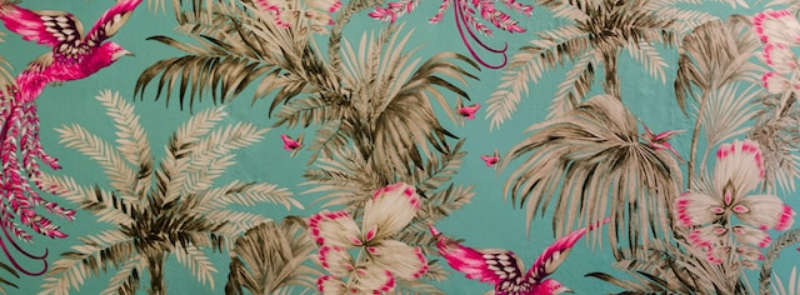
When It Occurs
Every February 28th
Timeline
Days Passed (958)
# Hashtags
#NationalFloralDesignDay #FloralBeauty
Every year on February 28th, National Floral Design Day is celebrated. Flowers, beloved by all, provide endless creative possibilities. Floral design emerges as a unique and distinctive art form, and this day is dedicated to honoring its significance. For thousands of years, floral design has played a crucial role in various art forms, including decoration, drawing, painting, bridal bouquets, textiles, and floral or garden arrangements. It stands as a timeless and essential artistic expression.
History: National Floral Design Day was created to honor Carl Rittner, a pioneer in floral design education and the founder of the Rittners School of Floral Design in Boston, Massachusetts. Rittner was a passionate advocate for the art of floral design, and he dedicated his life to teaching and promoting the craft. The day was officially established in 1995 by then-Governor William Weld of Massachusetts, marking the anniversary of Rittner’s birth on February 28. Since then, National Floral Design Day has become a way to celebrate the beauty and significance of floral art, as well as to recognize the contributions of floral designers around the world.
The Art of Floral Design:
-
Creativity and Expression:
- Floral design is a form of art that allows for creativity and personal expression. Designers use flowers, foliage, and other materials to create arrangements that convey emotions, tell stories, or enhance the aesthetic of a space.
-
Cultural Significance:
- Flowers have played an important role in cultures around the world for centuries. They are used in rituals, celebrations, and as symbols of love, friendship, and remembrance. Floral design helps preserve these cultural traditions and brings them into contemporary settings.
-
Seasonal Beauty:
- Floral designers often work with seasonal flowers, which means their creations change throughout the year. This connection to the seasons adds a dynamic element to floral design, with each arrangement reflecting the beauty of the time of year.
-
Balance and Harmony:
- Successful floral design requires a keen sense of balance, color harmony, and proportion. Designers carefully select flowers and foliage that complement each other, considering factors like texture, shape, and size to create cohesive and visually pleasing arrangements.
-
Therapeutic Benefits:
- Working with flowers can be a calming and therapeutic activity. The process of arranging flowers allows individuals to focus on the present moment, engage their senses, and create something beautiful, which can have a positive impact on mental well-being.
Types of Floral Design:
-
Bouquets:
- Bouquets are handheld arrangements of flowers that are often given as gifts or used in weddings. They can range from simple, informal bunches of wildflowers to elaborate, structured arrangements with a specific color scheme and design.
-
Centerpieces:
- Centerpieces are floral arrangements designed to be placed in the center of a table or focal point in a room. They are commonly used for events such as weddings, dinners, and parties, and are designed to complement the overall decor.
-
Corsages and Boutonnieres:
- Corsages and boutonnieres are small floral arrangements worn on clothing, typically at formal events like proms, weddings, or ceremonies. A corsage is usually worn on the wrist or pinned to a dress, while a boutonniere is pinned to a suit lapel.
-
Funeral and Sympathy Arrangements:
- Floral arrangements are often used to express sympathy and honor the deceased at funerals. These designs can include wreaths, sprays, and crosses, each with symbolic meanings and a focus on conveying comfort and remembrance.
-
Wedding Floral Design:
- Weddings often feature extensive floral design, including bouquets, centerpieces, altar arrangements, and floral arches. Each element is carefully planned to reflect the couple’s style and the overall theme of the wedding.
-
Ikebana:
- Ikebana is the Japanese art of flower arranging, known for its minimalist style and emphasis on harmony, balance, and simplicity. Ikebana arrangements often focus on the line and form of the branches and flowers, creating a sense of calm and elegance.
How It’s Celebrated:
-
Creating Floral Arrangements:
- One of the most popular ways to celebrate National Floral Design Day is by creating your own floral arrangements. Whether you’re a seasoned florist or a beginner, experimenting with different flowers, colors, and styles can be a fun and rewarding experience.
-
Taking a Floral Design Class:
- Many local florists, community centers, and botanical gardens offer floral design classes. These classes provide an opportunity to learn new techniques, explore different styles, and gain inspiration from experienced designers.
-
Visiting a Botanical Garden:
- Visiting a botanical garden is a great way to appreciate the beauty and diversity of flowers and plants. Many gardens feature floral displays and exhibits that showcase the art of floral design in a natural setting.
-
Supporting Local Florists:
- Purchasing flowers from a local florist is a wonderful way to support small businesses and celebrate National Floral Design Day. Many florists offer custom arrangements, allowing you to work with a designer to create a unique piece.
-
Learning About Floral Design History:
- Exploring the history of floral design can deepen your appreciation for the art form. Reading books, watching documentaries, or researching famous floral designers and their contributions to the field can be both educational and inspiring.
-
Sharing on Social Media:
- Sharing your floral creations on social media is a popular way to celebrate National Floral Design Day. Using hashtags like #NationalFloralDesignDay or #FloralDesign allows you to connect with other flower enthusiasts and showcase your work.
Fun Facts:
-
Language of Flowers:
- Throughout history, flowers have been used to convey specific messages or emotions, a practice known as "floriography." For example, red roses symbolize love, while lilies often represent purity.
-
Floral Design as Art:
- Floral design is considered a fine art in many cultures. In Japan, Ikebana is not just about arranging flowers but is also a meditative practice that reflects the beauty of nature and the passage of time.
-
Flower Power:
- Studies have shown that having flowers in the home or workplace can boost mood, reduce stress, and enhance creativity. The presence of flowers has a positive effect on emotional well-being, making floral design a powerful tool for enhancing quality of life.
Impact: National Floral Design Day highlights the significance of floral design as both an art form and a means of personal expression. The day encourages people to engage with flowers in creative ways, whether by arranging them, learning about their symbolism, or simply enjoying their beauty. It also supports the floral industry by promoting the work of florists, educators, and artists who contribute to the rich tradition of floral design.
Conclusion: National Floral Design Day is a celebration of the beauty, creativity, and artistry that flowers bring to our lives. Whether you’re creating your own arrangements, taking a class, or simply enjoying the work of professional florists, this day offers the perfect opportunity to appreciate the timeless appeal of floral design. By participating in National Floral Design Day, you can explore the world of flowers, express your creativity, and connect with the natural beauty that surrounds us.


